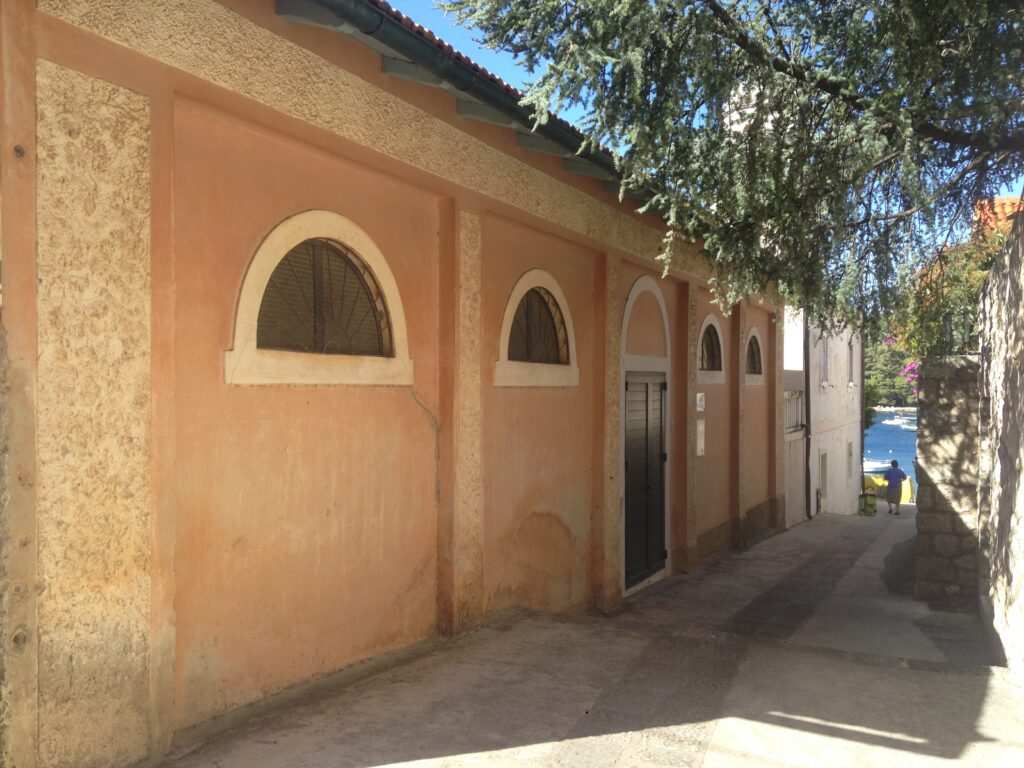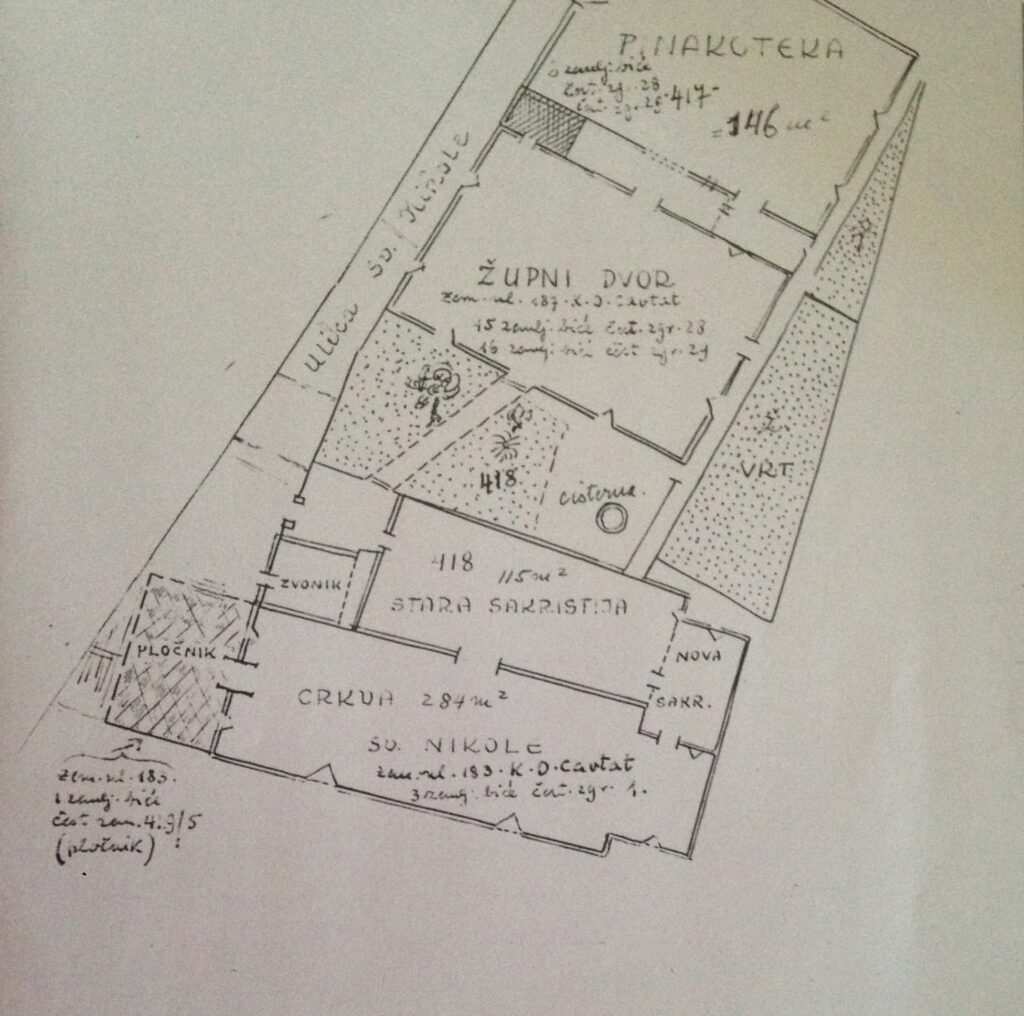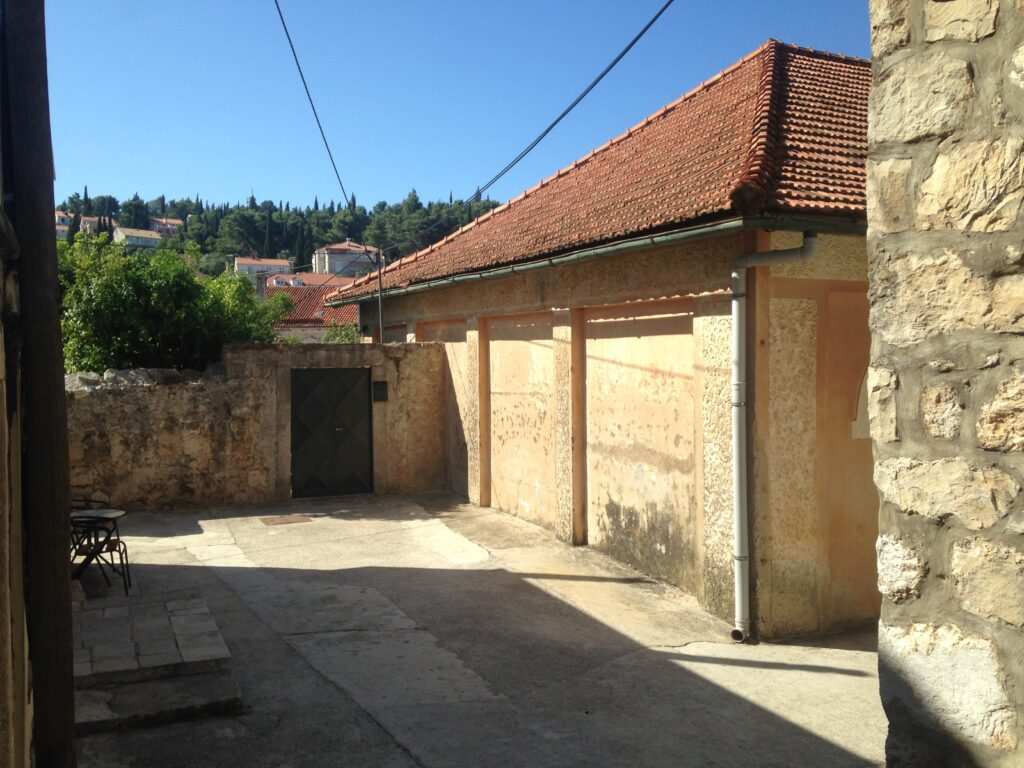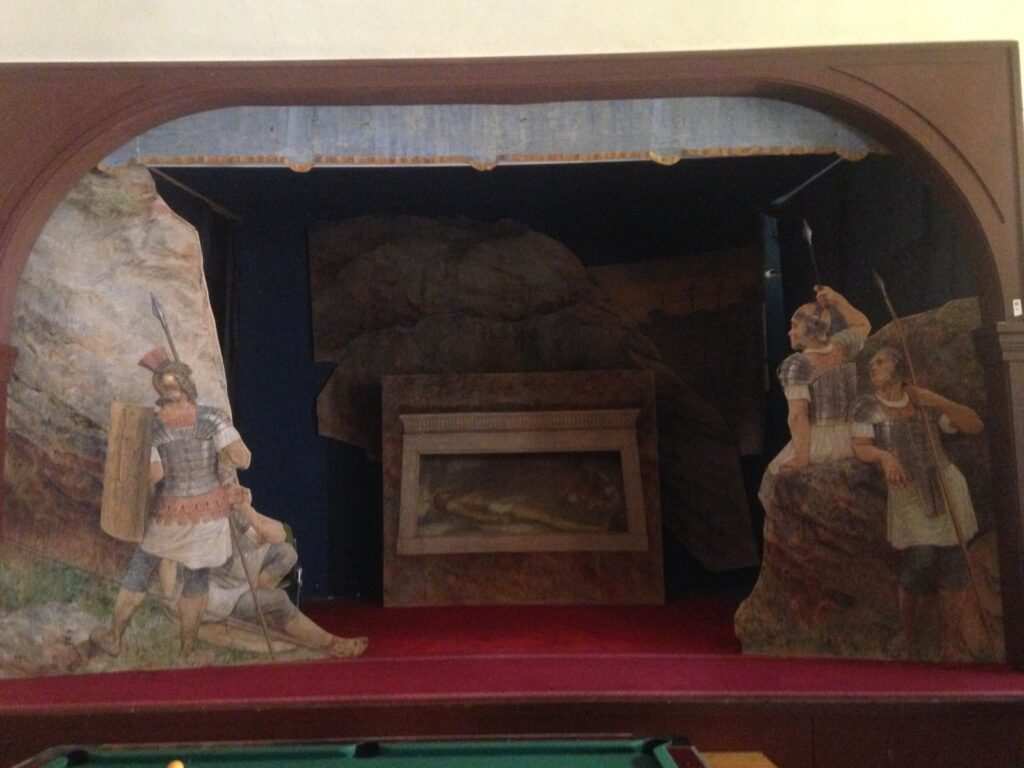The architectural complex of the parish church of St Nicholas is located in the very eastern part of the town, not far from the town walls. It includes a parish church, a bell tower, a garden, a parish house, while it is enclosed by the Pinacotheca building on the north side. The pinacotheca, previously known as The St NicholasCentre, was built on part of the parish garden in 1938. It was known among the Cavtat residents as `mali teatrino‘ due to the fact that its interior space was shaped like a small theatre, i.e. as a simple hall with a stage at which various types of performances could be held.
The main entrance to the hall was from the St Nicholas Street. There are also two side doors, one leading to the garden and the other connecting the pinacotheca with the parish house via a connecting room. The interior features walls decorated with pilaster strips and high-set arched windows. The stage is elevated, with a space intended for the needs of the performers underneath the stage floor. Another interesting feature of this building is its façade, marking a departure from the typical Cavtat architecture due to the use of cement plaster in its construction.
This building was built owing to the efforts of The Reverend Father Ivo Dagonig, the parish priest of Cavtat, and was consecrated on 24th April 1938 by the Bishop of the Dubrovnik Diocese, Josip Marija Carević. The older Cavtat residents were witnesses to the diversity of cultural events taking place in the building in question; these events included film screenings. In 1952, the prominent Croatian art historian Cvito Fisković used the premises to open a pinacotheca housing a vast art collection which still attracts the attention of visitors today.
Among the many valuable works of art contained therein, such as paintings, sculptures and liturgical vessels, the collection features icons in the Italo-Byzantine style, a 15th century icon depicting St Nicholas, a 15th century alabaster relief depicting the head of St John, paintings by various Baroque artists, classicist paintings by Carmelo Reggio, as well as portrait sculptures by Petar Pallavicini and Olga Solovieva, respectively. However, the most notable items in the collection are certainly works by Vlaho Bukovac. Today, the stage of the pinacotheca is occupied by the diorama named Kristov grob (`The Tomb of Christ’) instead of by performers. The diorama was made by Bukovac in 1902, during his four-year stay in Cavtat, in order to be exhibited at the parish church.
The diorama consists of five superimposed layers cut along the contours. A large canvas depicting Golgotha forms the background, over which a stone cave containing the body of Christ laid in the tomb and angels kneeling at the bottom of the bier is superimposed, while the foreground layer depicts four Roman legionaries, standing two on each side of the entrance to the tomb.
Bukovac noted his recollections of the time when he made the diorama in his autobiography, Moj život (`My Life‘):
While in Cavtat, I made some portraits as well as a `diorama‘ for our St Nicholas Church. It was something completely new! This ‘diorama’ fills the entire chapel. It depicts the tomb of Jesus with angels carrying flowers and weeping over his dead body. In the distance you can see the hill of Calvary. Soldiers are standing guard in front of the grave carved in stone. Many foreigners have visited our Cavtat just to see it. With this act, I have immortalized the memory of my parents, both of whom were baptized and married in that church, as well as anointed before their eternal rest.



